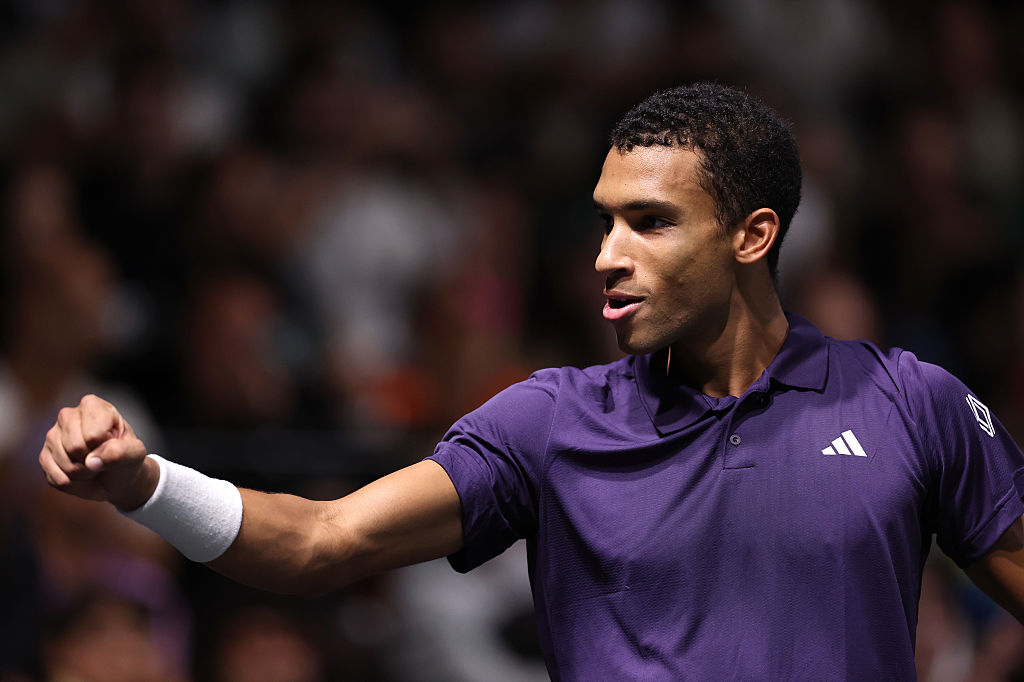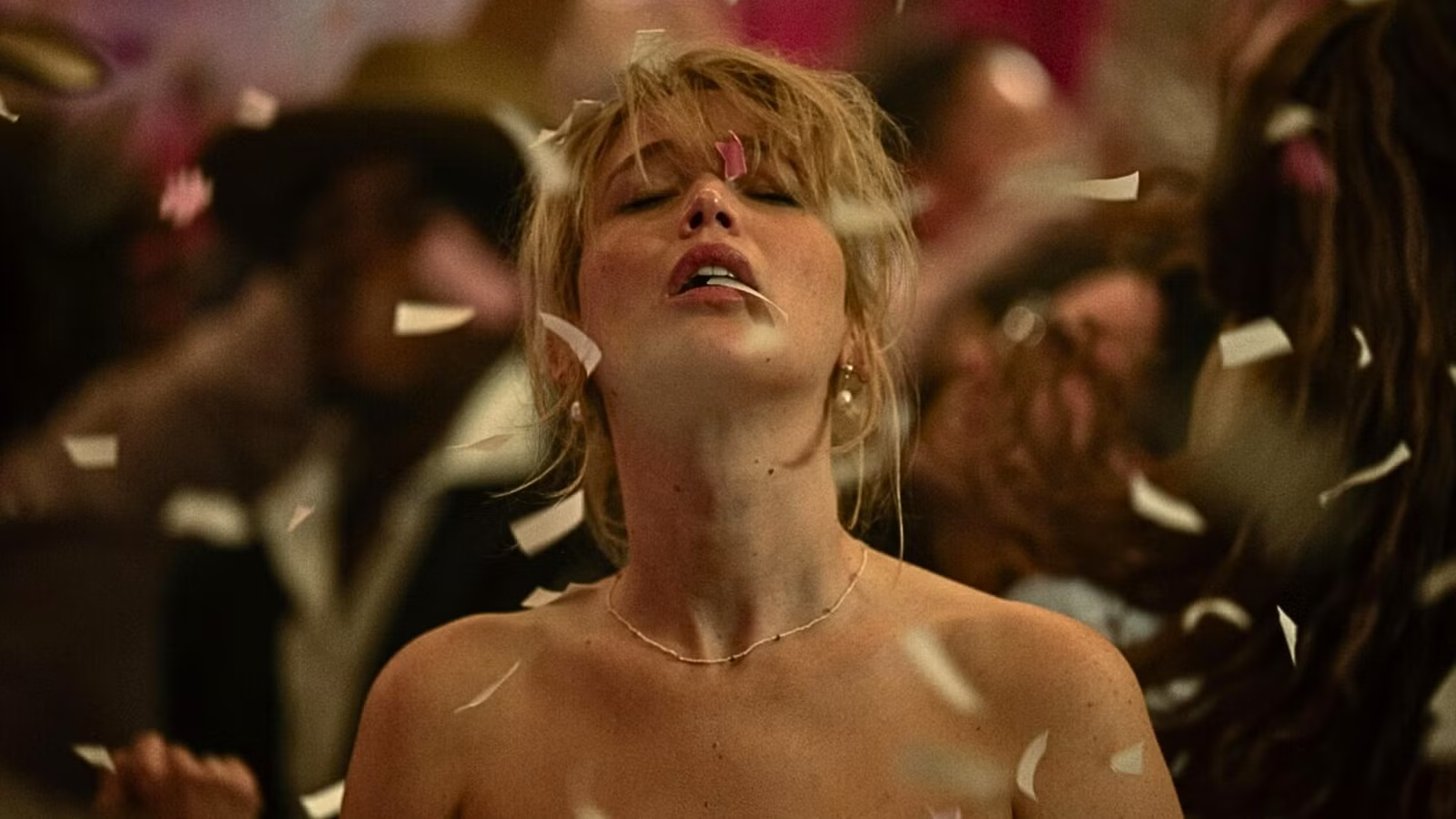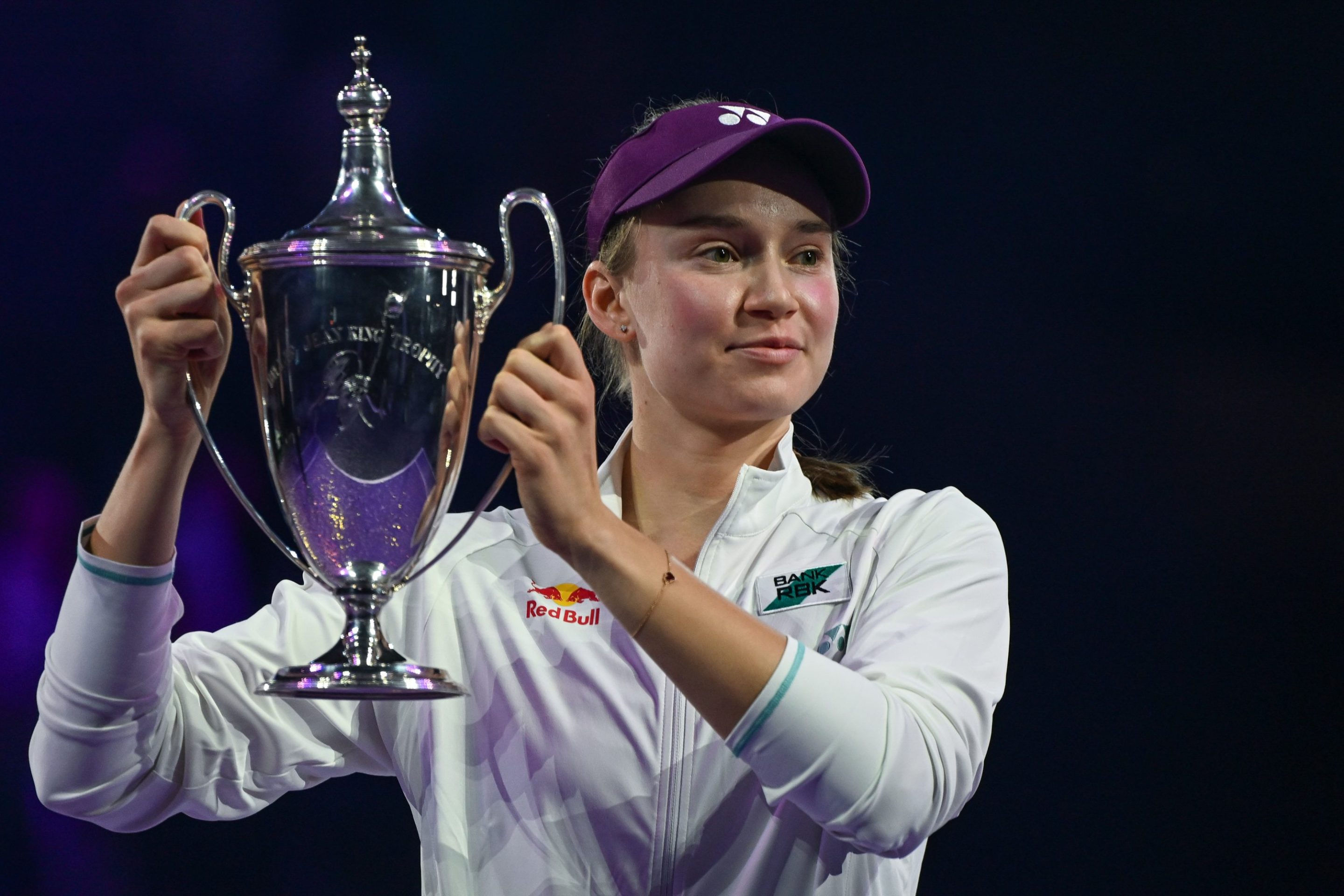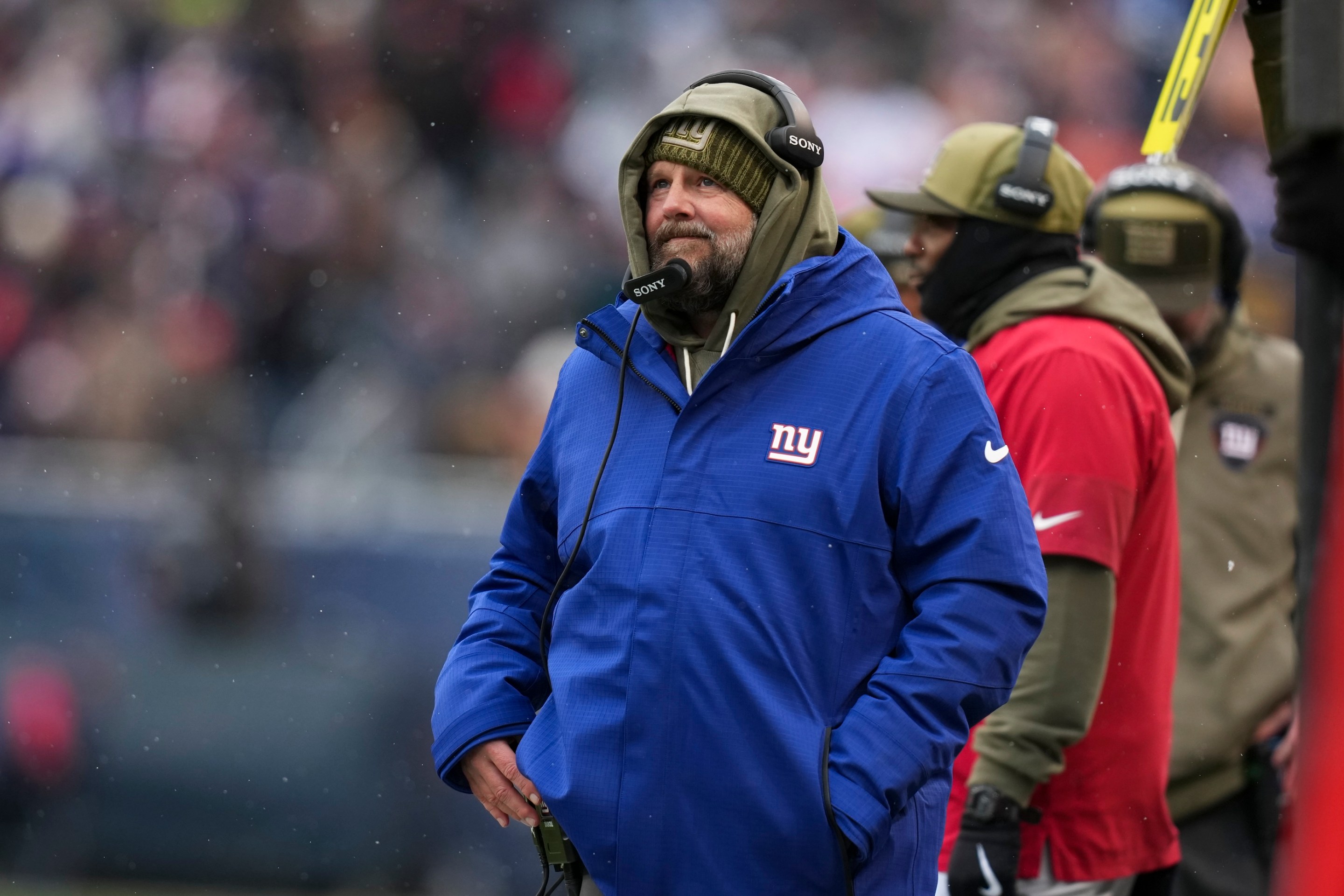Before Wimbledon in 2019, I remember skimming over the list of men’s favorites at a number of sites. Novak Djokovic, Roger Federer, Rafael Nadal … Felix Auger-Aliassime? He was 18 years old at the time and ranked 21st in the world, but no worse than the sixth-favorite anywhere I looked. Auger-Aliassime had famously owned Stefanos Tsitsipas, who beat each member of the Big Three before age 21 and enjoyed plenty of hype at the time, in juniors. Tennis hipsters had long identified Felix as a true talent. And he was having a strong grass season, making the final at the Mercedes Cup and the semifinals at Queen’s Club. Was this sufficient justification for the odds, given that he’d never won a match at a major before? Probably not. (He ended up losing in the second round.) But he was the closest thing men’s tennis had to a prodigy at the time.
The next year and a half quieted the buzz a bit. Curiously, this gifted player could not win a final for his life. Eight finals came and went, all in small tournaments that shouldn’t have invoked crippling nerves—Marseille? Cologne 1? The Murray River Open?—yet Auger-Aliassime couldn’t even win a set. He began to feel like the answer to an unfortunate trivia question: Which once-mighty prospect lost finals to Benoit Paire and Dan Evans in straight sets? At times, Auger-Aliassime looked like he should have won all those finals: At 6-foot-4, he could channel his long stride and wingspan into lanky defense like Daniil Medvedev, but had a majestic, swishing forehand on top of that. His first serve was enormous and precise. The backhand was dubious, but Felix wouldn’t need it when dictating play with that incisive forehand anyway. The idea that he could attack or hang in rallies, bolstered by the huge serve, tantalized plenty of tennis fans.
Auger-Aliassime lived out some of that vision by making the Wimbledon quarterfinals and U.S. Open semifinals in 2021, though he lost listlessly to Medvedev in the latter. He had his best season in 2022, first redeeming himself for the sleepy end to his run at the Open by taking Medvedev to the brink at the Australian Open in one of the best matches of the decade thus far (unfortunately, he lost it after having a two-set lead and a match point in the fourth set). In Paris, he became just the third man to take Rafael Nadal to a fifth set at Roland-Garros (he lost that, too). But he went on a tear during the indoor swing at year’s end that included three straight titles at small tournaments, a revenge win over Nadal, and a 6-3, 6-2 drubbing over a young chap named Carlos Alcaraz, Felix’s third straight win against the upstart. Yep, we once lived in a world in which people earnestly thought Auger-Aliassime posed a serious matchup issue for Alcaraz. Felix finished that season ranked No. 6 in the world and just 22 years old. It felt like the start of his prime. He proceeded to lose in the first round of six of the next 12 major tournaments he played instead.
The worst version of Felix, seen all too often in the past few seasons, camps out on the ad-side of the court, wasting his lovely forehand by using it only as an excuse not to hit backhands. Floppy, inside-out forehands into the middle of the court are the starkest trademark of Bad Felix. Second was the inability to break serve, which overloaded responsibility onto his own serve. Knee and shoulder injuries exacerbated his issues in those wilderness years. His most notable result was a run to the final of the Madrid Open in 2024, during which then-world No. 1 Jannik Sinner gave him a walkover, and two of his other opponents retired mid-match. Felix then lost to Andrey Rublev in the final after winning the first set.
He got a real shot at Sinner in the quarterfinal of the Cincinnati Masters in August, and actually had a positive head-to-head against him at the time. The wins were before Sinner became a god in 2024, mind you, but not nothing. Enough to get your hopes up. But the match was so dire: Auger-Aliassime hit six winners and 35 unforced errors. He got bageled in the first set, went up 2-0 in the second after a Sinner dip, then never won another game. I’m not even sure Sinner played that well. I was reduced to drawing scoreboxes in my notebook referencing the fleeting moments in which Auger-Aliassime had leads in individual games for the amusement of my friends.

And yet, Felix news has been mostly good since that disaster! Whether the indignity of such a lopsided loss humiliated him into playing better or he channeled his good form from earlier in the tournament, Felix kicked ass at the U.S. Open. He met world No. 3 Alexander Zverev in the third round, who, never a particularly entertaining player even at his best, spent the season playing increasingly passive tennis. He would rather let you miss than hit a winner, so the match is yours for the taking. It’s easier said than done, though. Plenty arrive at the doorstep of victory against the cowardly German, only to shoot themselves in the foot—most notably Tallon Griekspoor, who has failed to serve out a match against Zverev what feels like a dozen times. Auger-Aliassime had no problem in the end, but first he had to get out of trouble. Down a set point in the second set, having lost the first, a single wayward swipe would sink Felix into a likely fatal deficit. Auger-Aliassime went for the line with a forehand and did not miss. By match’s end, the winner in four sets, he’d struck 23 forehand winners to his opponent’s three.
Auger-Aliassime’s run continued to the Open semifinals, where he joined an even more exclusive club: He introduced competitive tension into a Jannik Sinner match. Sinner continued his Cincinnati beatdown of Felix in the first set, making it all the more impressive that Auger-Alassime bounced back in the second, that deadly forehand getting hot enough to take over the match. After losing the third set, Auger-Aliassime brought up a series of break points in the fourth, threatening to push Sinner to even greater depths. On one of those points, Sinner dictated the rally just how he likes, creeping inside the baseline as Auger-Aliassime drifted further behind his. But he’d come in too far: On the dead run out wide to his forehand, Felix clocked a missile down the line that landed deep in the court. Sinner had to reach behind himself to hit an awkward, scooped backhand. Somehow, that improvisational stroke cut across the net at a sharp, acute angle, smudging the line for a winner. Sinner went on to close the match out in the fourth set, but that point has stayed with me since. Sinner’s rally ball is so deadly all on its own that against most opponents, safe shots are all that’s required en route to an easy win. That Auger-Aliassime made Sinner hit a line on a huge point was a reminder of the potential we saw in him six years ago.
After the U.S. Open, Auger-Aliassime went 9-1 over his next 10 matches, winning a small tournament in Brussels. He’s back into the top 10 and is ninth in the Race, one spot out of the prestigious ATP Finals. Just when it looked like he was riding high, though, Felix had to retire from his Swiss Indoors quarterfinal with injury. Even the red-hot Canadian is not immune to the demented rigors of the tennis calendar. The details of Auger-Aliassime’s injury remain murky—Tennis.com wrote that the official reason for his retirement was a left knee issue—but he did manage to play in his first-round matchup against Francisco Comesana at the Paris Masters on Tuesday, winning in three sets.
We’ll see how the knee holds up throughout the rest of the tournament, but a potential roadblock following a burst of good form makes for a microcosm of Auger-Aliassime’s whole career. He remains a bright talent, and there’s plenty of opportunity to ascend further. As Alcaraz and Sinner flourish at the top of the game, the rest of the ATP is in shambles. Zverev is whinging about a suite of injuries even as he continues to play every tournament possible. Taylor Fritz is wringing his game dry of everything it can produce, but he can’t beat the top two. Novak Djokovic is 38 and breaking down physically in best-of-three-set matches. Ben Shelton has a big game, but the edges remain rough. Jack Draper is made of porcelain. Alex de Minaur doesn’t have enough power. Arthur Fils (back) and Holger Rune (just did his Achilles) won’t be healthy for a while. A real void exists below Alcaraz and Sinner in the rankings that is begging to be filled, if only a talented player could just find their form and stay healthy for a while. Felix once again looks like he could be that guy, but is yet to prove that his best tennis can survive sustained adversity. Maybe he’ll finally arrive as a consistent top player, maybe he won’t. But his latest run has been captivating enough that the struggle will be worth watching either way.







